
Photodynamic Therapy Following Curettage for Recalcitrant Multiple Plantar Warts: A Case Report and 6-Month Follow-Up
2025-05-21 11:38Plantar warts are common skin lesions frequently seen in adolescents, especially in individuals with weakened immune systems. Conventional treatments such as cryotherapy, laser ablation, surgical excision, and topical medications often result in high recurrence rates and localized tissue damage, significantly affecting patients’ quality of life.
This report documents a case in which a patient with recalcitrant multiple plantar warts was treated using photodynamic therapy (PDT) following superficial curettage of hyperkeratotic lesions—without local anesthesia. The method proved to be effective, painless, and recurrence-free at six months post-treatment.
Patient Information
Gender: Male
Age: 17
Chief Complaint: Multiple hyperkeratotic plaques on the right sole for over three years
Medical History:
Three years ago, the patient developed multiple yellowish, firm papules on the sole and toe pads without any clear trigger. The lesions gradually increased in number and size, becoming painful during ambulation. Prior cryotherapy with liquid nitrogen at other clinics had failed. The patient had no history of immunodeficiency or other systemic illness.
Diagnosis
Clinical Diagnosis: Multiple plantar warts (verruca plantaris)
Treatment Protocol
Pre-Treatment Preparation:
Clean and disinfect the wart surface and surrounding skin.
Carefully curette the hyperkeratotic layer using a No. 15 surgical blade, avoiding the dermis.
Stop curettage upon slight pinpoint bleeding, and apply gauze for hemostasis.
Photosensitizer Application:
Use 354 mg of 5-aminolevulinic acid hydrochloride (Shanghai Fudan-Zhangjiang Bio-Pharmaceutical Co., Ltd., CFDA: H2007027).
Mix into a sterile gel at 20% concentration.
Occlusion:
Apply the ALA gel evenly to the wart and 2 cm of surrounding normal skin.
Cover with light-blocking film for 3 hours.
Light Irradiation Parameters:
Remove occlusion and clean off residual gel.
Irradiate with a 633 nm PDT device at 80 J/cm² for 20 minutes per session.
Treatment Frequency:
One session every 10 days
Total of 5 sessions
Endpoint: Complete resolution of lesions
Follow-up duration: 6 months
Clinical Images
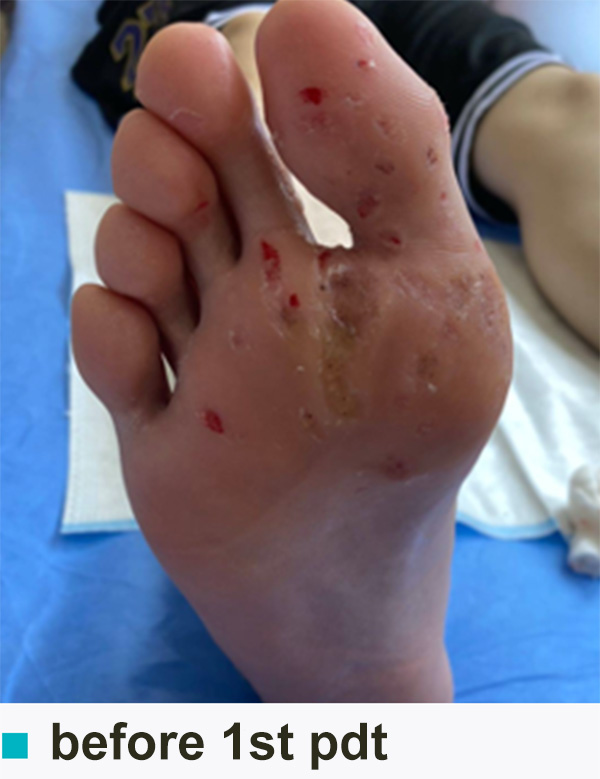
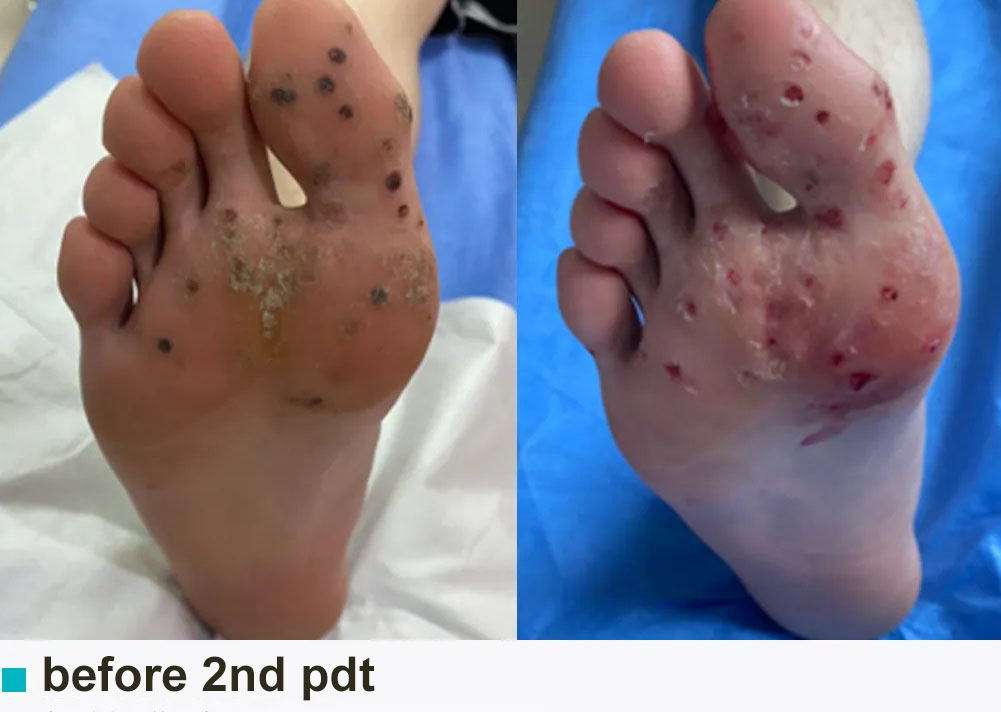
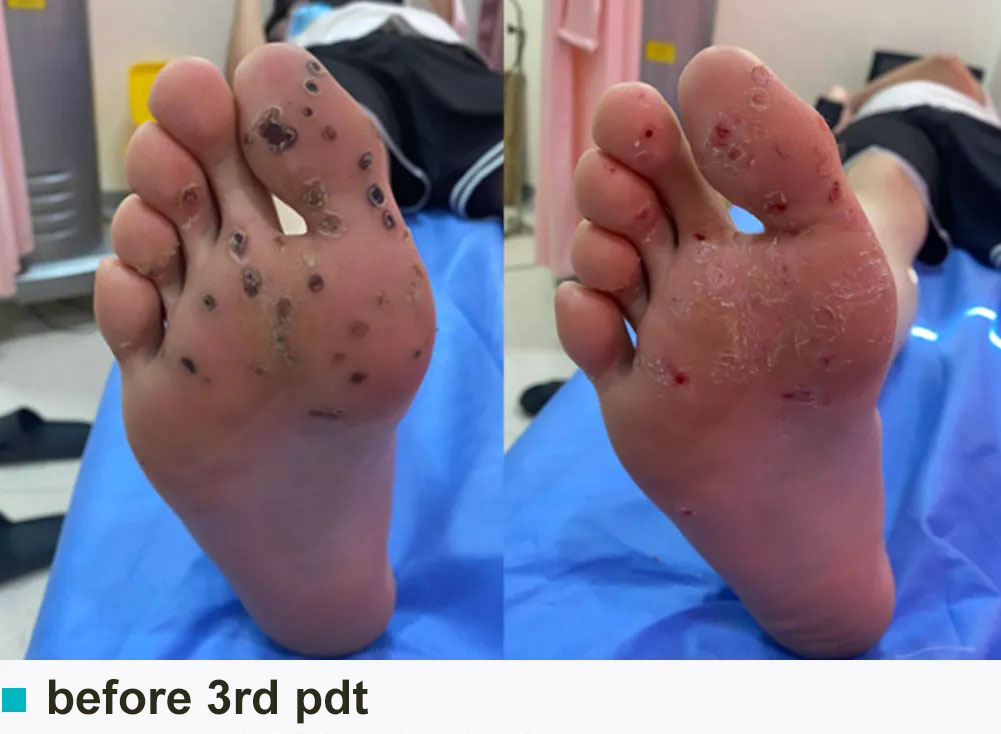
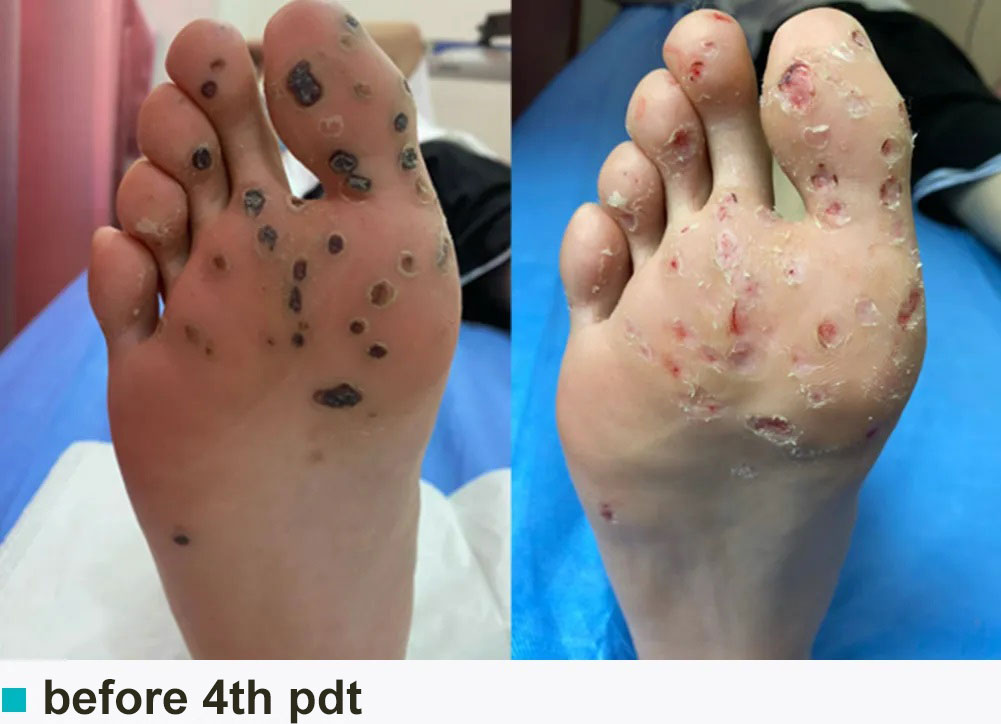

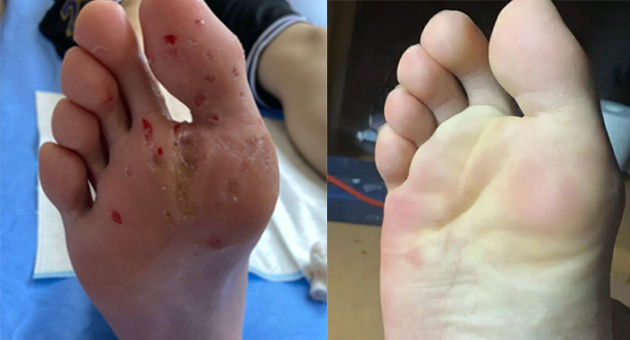
Follow-Up and Prognosis
At the 6-month follow-up, the patient remained wart-free with no recurrence or noticeable scarring. The outcome was cosmetically satisfactory and functionally excellent, demonstrating the potential of PDT combined with curettage as a first-line treatment for stubborn plantar warts.
